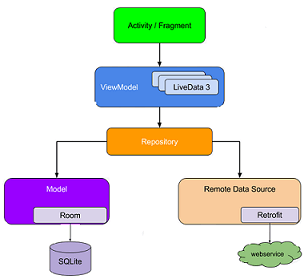
The architecture of the Android operating system is Different when we compare it with other mobile operating Systems and Apps. Android is the most used operating system. It is the top-selling mobile operating system. It is an open-source and anybody can use it to build apps in their own way.
If you want more basics on Android get it by Android Online Training1.The architecture of Android:
It is based on Linux and a stack of software components and those are divided into four layers.

2.App layer:
This is the top-most layer of the architecture. Many users interact with this layer like making phone calls, basic functions, access the web browser, etc.
3.Framework Layer:
By using these program we can handle the function easily like voice call board, resource management.
4.Important blocks of App Framework:
a)Activity Manager: It manages the app lifecycle and has several states. In this activity manager, apps have several roles to do with their own life cycle. Apart from this, it has one main activity is, it starts the apps when it is begun.
b)Content Provider: It means, apps share data between them when they required. It shares data from time to time one app to another app. This content provider allows giving access to another app.
c)Telephony Manager: It can manage all voice calls.
d)Location Manager: It works using a cell tower or GPS.
e)Resource Manager: Suppose, our apps required external funds. This Resource Manager makes them available in a standardized way.
5.Native Layer:
In Android architecture, the next layer is the Native Layer. Android will run on devices with a small amount of memory and access to low power. Some basic libraries like the libs are refined mainly for low power loss.
Generally, In the Native layer, we have libraries. Those can carry the set of terms to guide the device and manage different types of data. This Media Library is shown by the audio and video recording format.
6. What is Dalvik VM?
It is open-source software and takes duty for running apps on Android devices. Dalvik VM wish low memory, we can run multiple instances at once. It operates on DEX files. The location is the same as the library's layer. The Android runtime layer includes core Java libraries also. By using Java program android developers built their apps.
7.Linux Kernel Layer:
This is the last layer in the Android stack. This layer never interacts with developers and users, but it is the heart of the entire system.
Finally, These are the best-known facts about android architecture in upcoming blogs we will update more data on this Topic.